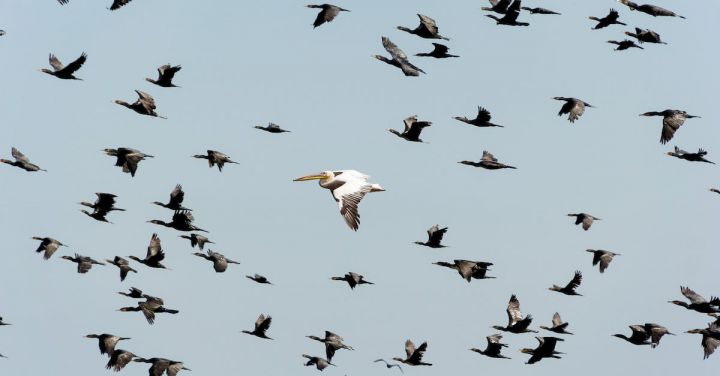Why Do Mallards Migrate Each Year?

Mallards are one of the most common and well-known species of ducks, found in various parts of the world. One of the fascinating behaviors exhibited by mallards is their annual migration. Each year, these beautiful birds embark on long journeys, traveling hundreds or even thousands of miles to find suitable habitats. But what drives mallards to migrate? In this article, we will explore the reasons behind the migratory behavior of mallards.
Seasonal Changes and Breeding
Mallards migrate primarily due to seasonal changes and the need to find suitable breeding grounds. During the breeding season, mallards require specific conditions for successful reproduction. This includes an abundance of food, open water, and suitable nesting sites. As the seasons change, the availability of these resources varies, prompting mallards to move in search of better conditions.
Food Availability
Food is a crucial factor that influences mallard migration. Mallards primarily feed on plant material such as seeds, grains, and aquatic vegetation. In the colder months, when food sources become scarce, mallards migrate to regions with more abundant food supply. This ensures their survival and provides enough energy for the demanding breeding season ahead.
Weather and Climate
Another driving force behind mallard migration is weather and climate. These birds are highly adaptable and can tolerate a wide range of temperatures. However, extreme weather conditions, such as freezing temperatures, heavy snowfall, or drought, can make it challenging for them to find food and suitable habitats. In response, mallards migrate to regions with more favorable weather conditions, where they can find the resources they need to survive.
Reproduction and Nesting
Mallards are known for their remarkable nesting habits. They build their nests on the ground, usually near water bodies. However, these nesting sites can be vulnerable to disturbances, predation, or flooding. To increase their chances of successful reproduction, mallards migrate to areas with more secure and undisturbed nesting sites. These sites provide better protection for their eggs and ducklings, ensuring the survival of the next generation.
Social Factors
Mallards are social birds and often form large flocks during migration. Traveling in groups offers several advantages, including increased protection against predators and better chances of finding suitable habitats. Additionally, migrating in flocks allows mallards to communicate and share information about food sources and potential dangers along the way. The social aspect of migration enhances their chances of survival and successful breeding.
Instinct and Navigation
Mallards possess remarkable navigational abilities that enable them to find their way during migration. They rely on a combination of instinct, celestial cues, and environmental factors to guide their journey. It is believed that they can detect the Earth’s magnetic field and use it as a compass, helping them navigate vast distances. Despite facing numerous obstacles, mallards are remarkably adept at finding their way and returning to their breeding grounds each year.
In Conclusion
Mallards migrate each year due to a combination of factors, including seasonal changes, food availability, weather, reproduction, and social considerations. Their ability to adapt and navigate long distances is truly remarkable. By understanding the reasons behind mallard migration, we can appreciate the incredible journey these birds undertake and the challenges they face along the way. So, the next time you spot a flock of mallards in the sky, take a moment to marvel at the remarkable instinct and determination that drives their migration.
